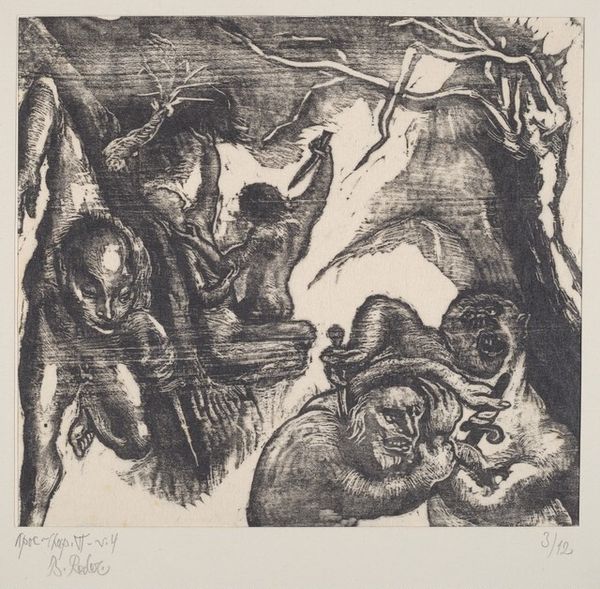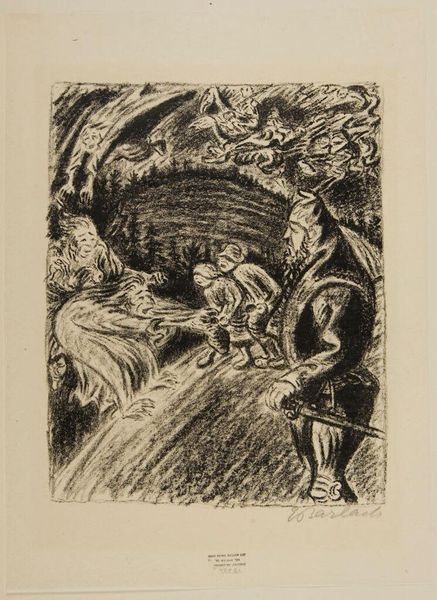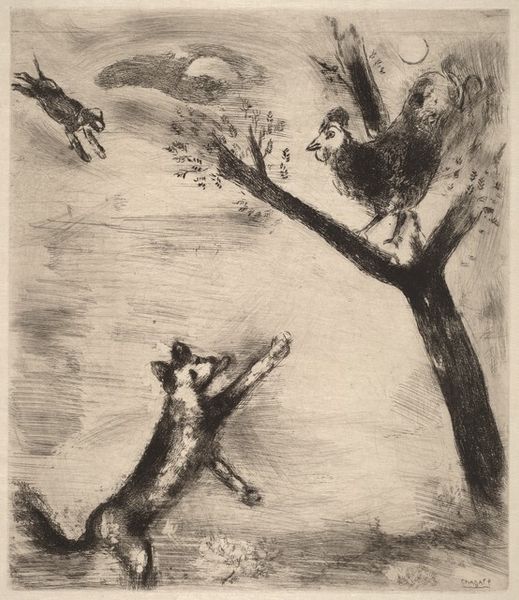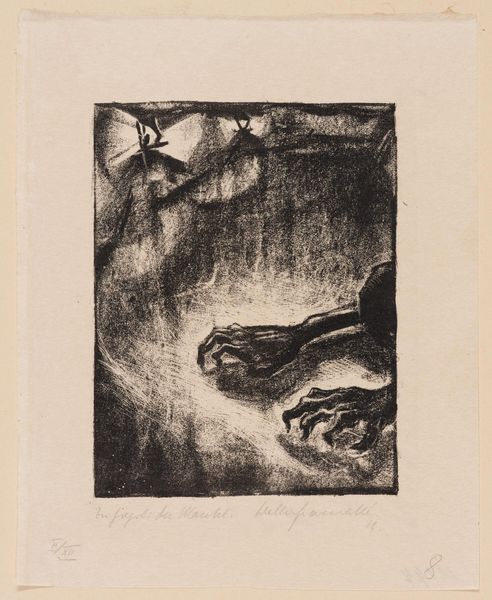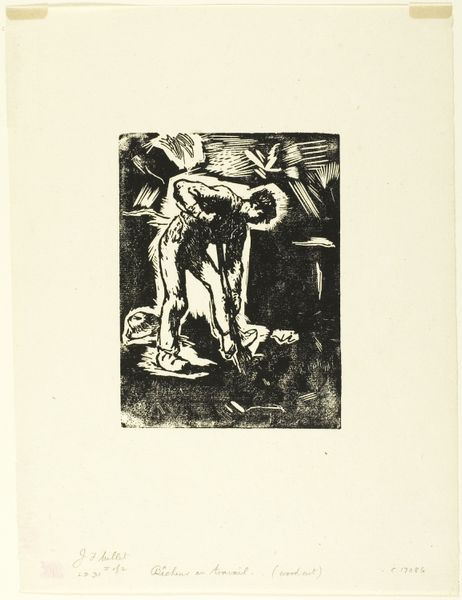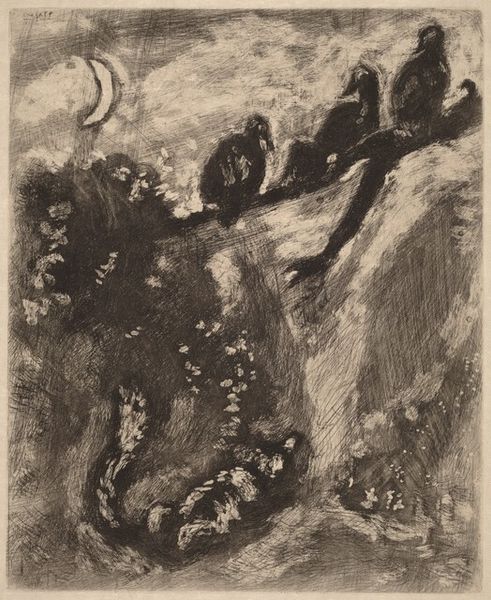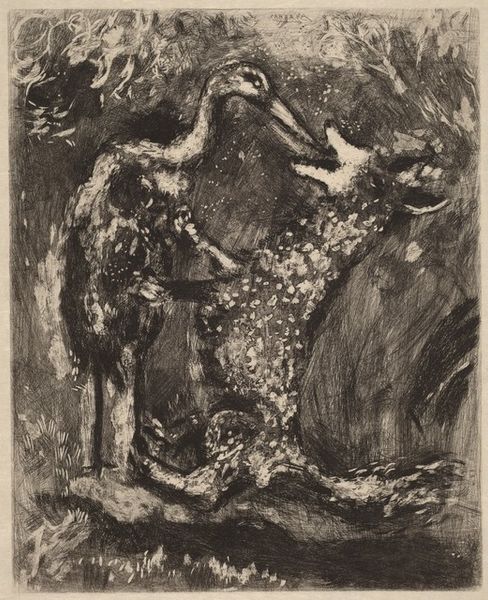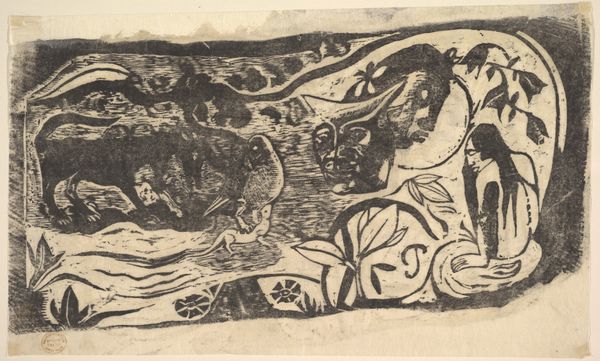
print, etching
#
narrative-art
# print
#
etching
#
fantasy-art
#
symbolism
Copyright: National Gallery of Art: CC0 1.0
Curator: This print, "And the sixth angel poured out his vial…" XVI.8, is an etching by Bernard Reder. What are your initial thoughts? Editor: It’s immediately unsettling. There's this strange mix of biblical imagery and almost hallucinatory creatures swirling around. The stark contrast of light and dark intensifies the disturbing feeling. Curator: I agree. Reder, who created the piece, masterfully manipulates the etching process. Notice the distinct, almost crude lines, achieved through repeated biting of the plate in acid. It lends itself to the apocalyptic narrative the title alludes to. What do you make of that narrative choice? Editor: The title references the Book of Revelation, hinting at divine wrath and upheaval. But Reder complicates it; his bizarre bestiary transforms the expected imagery into something profoundly strange. The angel is less a figure of salvation and more one of chaos. It’s a fascinating deconstruction of power. Curator: The social context of its production may illuminate our reading. Reder created this kind of work during a period of enormous upheaval, when his own labor and means of making were deeply affected by both the market and various political and cultural events. His unique technique—that intense line work and high contrast we discussed earlier—would require considerable resources and craftmanship to produce. How does knowing that affect how we read the social commentary embedded in the piece? Editor: Knowing Reder's background only emphasizes the critique. His use of this very laborious and artisanal printmaking technique, with imagery referencing divine retribution, reads as a sharp criticism of the abuses of power inherent in industrial capitalism. His focus isn't so much the spiritual realm as the worldly suffering. Curator: That's a powerful interpretation. Reder has presented a world transformed, one whose making and materiality are meant to remind us of the systems—both social and symbolic—that constantly exert their influence on the things that we produce and on us as social subjects. Editor: Exactly. It's a deeply unsettling commentary, prompting a recognition that any such so-called reckoning or cataclysm is borne through inequitable labor and is shaped by hierarchies that favor certain voices and forms of agency over others.
Comments
No comments
Be the first to comment and join the conversation on the ultimate creative platform.

